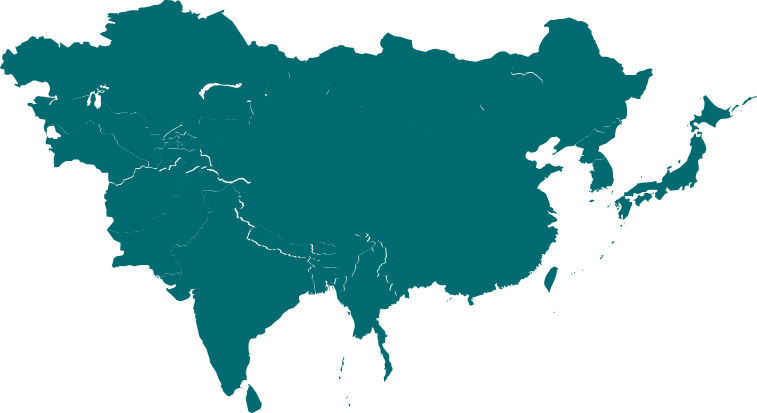- Written by Hiba Ishaq
Every year, Nowroz falls anywhere from 19th-21st March and is celebrated all over the world. Nowroz literally means ‘new day’ where ‘now’ means ‘new’ and ‘roz’ means ‘day’. Nowroz is celebrated as the ‘Persian New Year’ and it always falls on the vernal equinox, also called the spring equinox. This day welcomes the spring as a fresh start to a new life where the past is cleaned and the renewal of the Earth that occurs by the spring. This festival dates back to 3000 years ago and does not hold its essence in any one particular religion. Nowroz is a secular festival that has its roots in the Persian culture but due to the rule of Central Asian rulers in the history, all across, it is now celebrated worldwide and holds significance in the Middle East, Central Asia and South Asia. However, it does partially have its roots in the religious tradition of Zoroastrianism. The Zoroastrianism religious tradition holds a close association of spirituality and humanity with nature. That is why the renewal of Earth during spring is linked with the regeneration of new life.
The preparation of Nowroz starts three weeks prior to the actual day. This can be seen as spring cleaning where everyone declutters old clothes, furniture and, everything that is old is replaced with new making it an essential task of welcoming the spring. Before the actual festive day, the last Wednesday of the old year is called ‘Chahr Shanbe Suri’ which can be loosely translated as ‘Eve of Red Wednesday’. On this day, people build bonfires and jump onto the fire singing, chanting and repeating the phrase ‘Zardi- ye man az toh, sorkhie ye to az man!’ which can be translated to, ‘Give me your beautiful red glow, and take my sickly pallor’. Since jumping around and onto the fire is dangerous, people now sit around the bonfire and repeat those phrases. Families wait for the exact moment of the vernal equinox which is called Tahvil. During this time, the families gather around together and countdown to wish everyone a ‘Happy New Year’. Now everyone knows the exact moment of Tahvil through newspaper and television but, before the technology people would wait for Haji Firoz to come to the neighbourhood while singing and dancing announcing the New Year. Once everyone wishes ‘Sal-e No Mubarak’ or ‘Happy New Year’, the elders in the family distribute sweets to everyone and families exchange gifts.
Food is the most important element of any festival and Nowroz celebrations are incomplete without the ‘Haft Seen table’ which mean ‘seven dishes starting with the letter S on the table’. This is a table decorated by family members and is present for fourteen days after Nowroz. This ‘Haft Seen table’ can be seen as a way humans connect their spirit with the nature where each item on the table symbolises some aspect of life. These items are mentioned in an article written by Jaclyn Micheal and include:
Sumac (crushed spice of berries): For the sunrise and the spice of life
Senjed (sweet dry fruit of the lotus tree): For love and affection
Serkeh (vinegar): For patience and age
Seeb (apples): For health and beauty
Sir (garlic): For good health
Samanu (wheat pudding): For fertility and the sweetness of life
Sabzeh (sprouted wheat grass): For rebirth and renewal of nature
Other than the ‘Haft seen’ table there are other items on the table like the mirror for the reflection of the past, orange to symbolize Earth, goldfish for a new life, coloured eggs for fertility and coins for prosperity. There is also a book on the table, either a Quran or the Shahnameh (a Persian story of kings and queens in 1000 CE). An important book placed on the table is the poetry book by Shams-Ud-Din-Hafiz who has historical literary significance much like Shakespeare in the English speaking world.
The dishes served on the Nowroz centre around greens and herbs representing and symbolizing freshness and renewal. The centrepiece dish is the ‘Sabzi Pulao Mahi’ – herbed rice with some kind of whitefish. Traditional sweets include naan berengi (cookies made with rice flour), baqalava (flaky pastry in rosewater) and nogul (sugar-coated almonds). The ‘Haft seen’ table remains in the household for thirteen days and the thirteenth day is called ‘Sizdeh Bedar’ which means ‘getting rid of the thirteenth’. On this day, families pack a picnic along with friends and relatives to a park where they sing and dance. It is also customary to bring Sabzeh (sprouted wheatgrass) and throw them in the river or lake symbolizing the return of plant to the nature. This day also marks the end of Nowroz celebration and on the next day, the normal routine is resumed.
Nowroz is not just about spring cleaning and food; it has its deep roots in spirituality and symbolism of life with nature. Spring symbolizes new life, new beginnings and all the items and traditions of the festival are symbols of withering away dust, sadness to start a new life. It is about entering new possibilities and excitement while closing the past doors. It has its deep roots in the Persian culture and the Zoroastrian religion where the emphasis is on cleansing and renewal along with family, community and a respect for tradition.
Read more of our blogs on Khwaeesh!
Bibliography:
Micheal, Jaclyn. 2003. Celebrating Nowroz: A resource for Educators. Center for Middle Eastern Studies, Havard University
Frank, Caroline. 2018. Persian New Year, or Nowroz, explained. https://www.vox.com/culture/2018/3/19/17138516/persian-new-year-nowruz-explained
